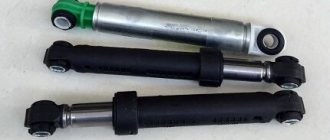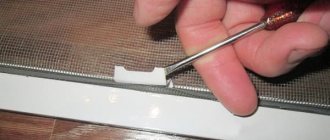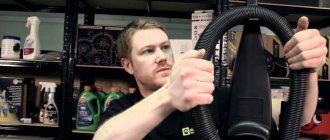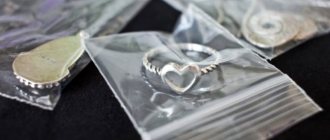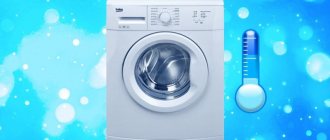Preventing damage
We have shared with you information on what to do if the microwave is working but does not heat food. It
is very important to determine the reason and problem why the microwave has stopped heating food. Most often, you don’t have to look for an answer for long: most likely, you used the device incorrectly
In order for your equipment to serve for a long time, you should not do the following:
- heat food in a metal container (a spoon also applies here);
- turn on an empty device (without food);
- warm eggs;
- place containers with lids.
heat food in a metal container (a spoon also applies here); turn on an empty device (without food); warm eggs; place containers with lids.
Over time, any equipment can fail due to wear and tear of spare parts. Equipment made in China can quickly break down due to shoddy assembly; they are used to making quality work only for themselves. If the price of equipment is quite ridiculous, then remember the expression that the miser pays twice. In conclusion of the article, we would like to give you advice: if your microwave oven is under warranty, then under no circumstances open it and do not start looking for a breakdown yourself. Trust qualified employees who will perform diagnostics and carry out work at the expense of the company.
Even if you feel that you can repair the device yourself, know that there is a great danger in any incorrect action. The device has the ability to accumulate electricity and can shock with high voltage. Trust professionals who can determine the problem even just by looking at the device. Your life is much more valuable! Think twice before opening the lid.
Of all the household appliances, the most hard-working one in the kitchen is the microwave oven. It is she who saves our time and helps us out in any emergency situations. Therefore, its unexpected breakdown is very upsetting. What to do if you find that the microwave is not heating?
How to extend service life
The reason that a microwave oven begins to heat food poorly or stops doing so is almost always due to wear and tear of one or another functional element. Of course, during the warranty period you need to use the services of a service center. But in order for the device to work for a long time even after the expiration of the warranty, and in order to avoid having to do repairs yourself in order to save money, you need to avoid actions that shorten the service life.
- It is better not to use metal utensils and generally avoid getting metal objects (forks, spoons, etc.) into the oven. To ensure that food is heated while using the microwave, and the dishes themselves remain cold, you need to avoid materials such as: crystal of different thicknesses and with different thicknesses, porcelain and glass with patterns of gold paint, disposable plastic tableware, ceramics without a protective glaze, aluminum molds for baking.
- Do not turn on the device idle - without food or products.
- It is also undesirable to heat liquids and raw eggs in containers that “explode” when heated.
- Failure of the touch panel is also a common malfunction, so it is advisable not to put too much pressure on it or get it dirty. For many ovens from well-known manufacturers, a breakdown of the touch panel is displayed on the display with a service code, for example, SE (each manufacturer uses different designations).
To avoid problems with microwave oven repair, you need to pay attention to devices manufactured by reputable manufacturers. No matter how much these models cost compared to their Chinese counterparts, the quality of the build and the materials used pay off in the future. It is difficult to repair a cheap “nameless” device with your own hands because it is not easy to find the necessary parts for it, and the technical documentation does not always correspond to reality. And craftsmen who encounter such a device may ask for a lot of money for repairs, since this will also be problematic for them.
The microwave has stopped heating and is humming.
If the microwave has stopped heating food properly and is making an uncharacteristic hum, then the reason may be the following:
- Diode failure. Its task is to direct the current in one direction. If a part fails, the microwave begins to buzz and the food does not heat.
- A faulty capacitor causes waves to appear and the device hums.
- Failure of the magnetron can cause buzzing and humming.
High voltage diode
Diode testing is almost never carried out due to its complexity. If it is assumed that the diode caused the device to malfunction, then it is easier to replace it. The test is carried out either by a hum when turned on, or by a blown fuse, or by a capacitor that does not heat up normally.
High voltage capacitor
If the microwave hums when turned on, it is possible that the capacitor has failed. It's easy to check: connect an ohmmeter and monitor the readings. If the arrow moves, then the capacitor is working; if not, then it is the cause of the breakdown. Please note that replacement or testing occurs only on a charged capacitor.
Magnetron
If all the parts show themselves to be operational, then most likely the problem is in the magnetron. A sign of malfunction is the humming of the microwave when there is no heating. Conduct a visual check for cracks and carbon deposits, measure the values with an ohmmeter. If it is damaged, replace it with one of similar parameters and dimensions.
Let's sum it up
A microwave oven is a necessary household appliance for any home. But to ensure it works smoothly and your food doesn’t stay cold, you need to keep an eye on it. It is better to wipe off any drops of fat that fall on the walls of the chamber immediately, and do a full wash at least once a week. This will prevent burnout of the mica plate, as well as failure of the magnetron.
Plates with a silver or gold pattern are direct damage to the equipment, this should also be remembered. The dishes should match the size of the rotating tray or be slightly smaller - this will protect against scratches on the walls of the chamber. By following these simple rules, you will extend the life of your microwave oven for many years.
Take care of your equipment - this will extend its service life for many years. We hope that the information presented in today's article was useful to our dear reader. Despite the fact that we tried to present it in the most accessible way, perhaps some of you still have unclear points or have questions while reading. Describe the point in the discussions below.
Our editorial team will try to answer all questions and clarify unclear points as quickly and thoroughly as possible. Have you ever had a problem with your microwave that you solved on your own? Write about it - such experience will be useful for beginning home craftsmen. Ask, communicate, share opinions. And finally, we suggest watching a video about repairing microwave ovens with your own hands.
Useful tips
In order not to waste time determining the reason why the Daewoo microwave stopped heating, you need to adhere to the basic rules for operating the equipment:
- toxic cleaning powders can get into food or damage the magnetron;
- dirt and grease from the body can be removed with a damp cloth;
- to remove dirt from the door, use a damp sponge and wipe the insulation;
- It is advisable to wipe touch panels with dry wipes;
- to get rid of an unpleasant odor, heat a glass of water with a slice of lemon;
- Reheat food by covering it with a special plastic lid to keep the walls of the heat chamber clean.
If the enamel inside the microwave has peeled off, be sure to paint over the damaged areas.
DIY repair
When starting work, make sure that the warranty period for your equipment has expired, otherwise you will lose the opportunity for free service at the service center.
- Screwdriver Set;
- pliers;
- soldering iron;
- ampere-voltmeter;
- rubber gloves (thin household gloves are fine).
First, re-read the instructions. For example, the passport of a Samsung microwave oven discusses the causes of common malfunctions and explains how to eliminate them.
After removing the screws on the back wall, carefully remove the housing cover. Inspect the device carefully, using a flashlight if necessary. An unpleasant smell of burning insulation, obvious deformation of parts, cracks or leaks will immediately indicate the location of the breakdown.
If the listed signs are absent, start searching.
First of all, measure the voltage in the network with a voltmeter and test the heater wire.
Using a tester, make sure that the operating voltage on the primary winding of the transformer is also 220 Volts.
Next, check the door microswitch with an ohmmeter. If it is working properly, the scale will show more than zero.
Visually inspect the power fuse. The absence of thin wiring inside indicates that it has burned out. You can check its resistance with a device.
Next, ring the high-voltage fuse, which is covered with a casing. The ohmmeter needle should deviate from 0 if it is intact.
Now let's move on to testing the multiplier, consisting of a diode and a capacitor. The ampere-voltmeter needle, which has deviated to the maximum, indicates a working capacitor. If it breaks down, the part must be replaced along with the diode.
Before checking feed-through capacitors, use an electrically insulated screwdriver to short their terminals to the housing. We touch the contact of the part with one probe of the measuring device, and the metal with the second. The sensor should show no resistance. This means the capacitor is working. After that, we check it for breakdown. There should be a resistance of 0.1 Ohm between the contacts of the capacitor.
After turning on the microwave for five minutes with a glass of water, measure the voltage in the primary winding of the transformer with an ampere-voltmeter. It should be 220 V.
Having purchased parts that match the parameters in a specialized store or radio market, replace the faulty ones using a soldering iron.
And finally, test the magnetron. When examined, its breakdown is indicated by carbon deposits. If this is not the case, look at the soldering points of the coil contacts and connections to the capacitors. Strip or solder them. The resistance of the assembly filament during testing should be 2–3 ohms.
Read also: Disc sawing machine for wood
Determining the reason why your device stopped heating and repairing it, if you have experience and the necessary tools, you can do it yourself.
Signs of a malfunction: there is a backlight, the plate is spinning, the grill is working, but the microwave does not heat the food.
The problem is usually a failure of the Magnetron. Otherwise, the reasons may be:
- capacitor malfunction
- transformer
- high voltage diode
- high voltage fuse
If you have the necessary knowledge in electronics, you can try to fix the problem yourself. Otherwise, you will need the services of a specialist.
Diagnostic procedure:
1. Check the voltage supply to the primary winding of the high-voltage transformer when starting the microwave oven (while observing safety precautions against electric shock).
2. If voltage is supplied, then it is necessary to check the reliability of the contacts, as well as the serviceability of the parts of the high-voltage part: high-voltage transformer, high-voltage capacitor, high-voltage diode, magnetron.
3. If the listed parts in the high-voltage circuit are serviceable, then the magnetron needs to be replaced with a serviceable one, and it may be worth replacing the high-voltage diode.
The most popular magnetron models: LG – 2m214-39F, 2m214-240GP, Samsung – OM75P(31), OM75s(31), Daewoo – 2m218.
Why problems might arise
The microwave is working but the food is not heating, it will be important for you to know that certain factors are often the cause:
- Difficulties arising with the supply voltage: to eliminate the cause, it is worth purchasing a power supply of the specified power.
- Failure of parts - over time, the design stops working correctly, the door does not open well and the dishes do not warm up completely.
- Setting the random mode.
- Presence of unnecessary objects in the chamber.
Constantly monitor the serviceability of the selected microwave oven.
To determine the reasons why the microwave does not heat and is noisy, carry out a comprehensive diagnosis. Start with a visual inspection of the walls of the heat chamber and the power cable. If the microwave does not heat, you need to disassemble the device to check the functionality of the components.
It is important to know that problems in the proper operation of a microwave often lie in its careless use, violation of basic rules and recommendations. As a rule, it is mainly very cheap models that become faulty; their parts wear out quite quickly and easily. Remember that it is the users themselves who are to blame if the microwave oven refuses to heat food properly.
Pay attention to some important points: the fuse has a glass bulb and metal elements. When you see a break in the chain, you need to replace it immediately.
Difficulties with the magnetron - poor quality and untested contacts (due to constant heating). The solution to this problem is simple - restoring contact using special tools. Has the cap turned black? You have to make an effort to clean it carefully. The antenna cap is damaged - carefully inspect the magnetron itself, make sure the element is in good condition. Replace the cap, and, if necessary, the magnetron: the new parts must match the installed ones in terms of power and structural features.
To prevent equipment from being used with the door poorly closed, special small switches are installed. It is important to know that often the reason why a microwave does not heat can be due to defects in the microswitch. This will require urgent replacement of parts.
Always be careful about the rules for using the selected devices. If necessary, contact trained specialists and experienced craftsmen.
Simple microwave oven problems
There are a number of reasons why the microwave stopped heating and it’s not a matter of broken parts, for example:
- The network voltage has decreased. The operation of the microwave oven, as well as its heating, can be affected by slight decreases of 20V. As a result, the plate will be heated, but there will be no food in the middle of the vessel. The issue of power outages can be resolved in one day: you just need to go to the store and buy a power supply.
- The network is overloaded. If two powerful appliances are running from the same outlet at the same time, an overload occurs. This issue can be resolved by installing another outlet.
- The door is out of order. As a result of a broken latch, the door does not close tightly and the microwave does not heat food or heats it poorly. Here you can try to repair or completely replace the latches.
- Incorrect mode selection. Very often, after defrosting mode, they forget to switch back to microwaves. Defrosting does not heat the food to the required temperature, and you are already about to disassemble the appliance.
Other possible malfunctions: causes, solutions
It happens that heating is produced, the light inside the chamber lights up, but the platform does not rotate. The reasons for this may be:
- incorrect installation of the plate;
- broken drive gears;
- engine failure;
- bad contacts.
The problem with the plate is easily solved - you just need to fix it. If this is not the reason, you will have to disassemble the device. Failure of gear gears is a problem that occurs more often in new models of microwave ovens.
In pursuit of reducing the cost of the product, the manufacturer began installing short-lived plastic gears (older models had metal ones). If this is the reason, then the sore is treated by replacing the gearbox - restoring the gear teeth is unrealistic. The plate must fit neatly into the grooves. The gear motor that rotates the tray may fail under the influence of power surges. In this case, one of the stator windings burns out. The result is motor failure.
Previously, engines could be sent in for repairs. They were rewound and they could function again. Today, such workshops no longer exist: in the event of such a breakdown, you will have to buy and install a new one. The main thing is to clearly and correctly rewrite the markings. Otherwise, the engine simply will not fit your model. The solution to the problem of bad contacts is quite simple. All connections must be cleaned of oxide, if necessary, tightened and connected in the reverse order.
What to do if the microwave oven does not turn on at all
If the microwave does not turn on, the reasons should be sought in the 220 V socket, plug, wire or fuse. The socket is checked, the wire and fuse are checked using a multimeter. The faulty part is replaced with a new one. If you think about it, this is the simplest problem that can happen to your microwave oven.
A blown microwave oven fuse needs to be replaced.
How to fix minor problems: 3 methods to solve the problem
Most of the above reasons why the microwave does not heat can be corrected at home yourself, while significantly saving the family budget for repairs. The most important thing is to have and be able to use a screwdriver and instruments for measuring resistance and voltage.
If you have instructions and a user manual, be sure to read it, perhaps there you can find the cause of the breakdown and a method for eliminating it.
Below are several options for mild microwave oven malfunctions and methods for eliminating them.
Wrong mode
This often happens, especially with new microwave ovens, that the operating mode is simply set incorrectly. Therefore, the microwave works, but does not heat the food. And, perhaps, this is the most insignificant cause of this problem, which can be eliminated without major repair work and replacement of parts.
To do this, you need to make sure that the required mode is set on the device control panel. Usually this is a function of heating food. By turning to the user manual for help, you need to set the appropriate command. Next you need to check the serviceability. To do this, you need to put a glass of water or some food in the oven and turn it on for 1-2 minutes.
If the temperature of the food has changed, then most likely the problem was only in the incorrectly set operating mode. Quite often, users set the defrost or grill mode instead of the heating mode. This prevents the food from heating properly because the wrong function has been selected.
Insufficient voltage
Unfortunately, today many houses still have old wiring installed, which was carried out during the construction of these houses. However, it is not designed for the number of electrical appliances that are now used in every apartment. This can cause low voltage in the home network and, as a result, malfunction of household appliances, including a microwave oven.
To confirm or rule out insufficient voltage, you must use a voltmeter. If there is none, then you should adhere to the following algorithm of actions:
- if in the apartment, in addition to the stove, several other devices are turned on (this is especially true for those cases when the devices are plugged into the same outlet as the microwave oven), they must be de-energized;
- install an uninterruptible power supply, which will stabilize the voltage.
If several electrical appliances are turned on simultaneously in a room, the voltage may not be enough. And if there is overvoltage, the wiring may burn out or the electricity will simply turn off.
Door fault
This is also one of the most common problems with microwave ovens. Often the door simply does not close tightly, which can be caused by either foreign objects or failure of the latches. It is the latches that play an important role in the proper operation of the microwave - they trigger the magnetron.
If the problem lies not in the ingress of debris, but in the malfunction of the latches, then they simply need to be replaced with new ones. During operation, ensure that the door is closed tightly.
How does a microwave oven work?
First, let's explain the principle of its operation. The basis of the machine is a magnetron, which creates an electric field. It acts on the liquid molecules in the product. They start to move. When they rub against each other, heat is generated. Due to this, as well as the use of additional devices, the equipment performs many functions - heating, defrosting, grilling and others.
Causes of failure
To understand why the microwave works but does not heat, it is necessary to accurately determine the reason that caused this breakdown. This will help simplify the repair process in order to prevent more serious problems with the device.
To accurately determine the reason why the microwave does not heat, you need to perform the following manipulations. The first step is to check the wiring. All wires must be dry and clean, without traces of burning. If the wiring has a blackened or melted appearance, then it must be replaced or cleaned. Quite often, household appliances, especially kitchen ones, do not work as a result of contact oxidation.
The second thing to do is check the voltage. This procedure can be done using a device called a voltmeter. Even a minimal deviation from the norms can cause a microwave oven to malfunction. Moreover, the breakdown may not be in the microwave itself, and in the case of low voltage, it is necessary to purchase an uninterruptible power supply unit, which will correct the current situation.
After this, you should check the serviceability of the door switch. To do this you need to use an ohmmeter
It is important to turn off the power to the household appliance before doing this. Also inspect the serviceability of the doublers, electromagnetic lamp
Pay attention to the primary winding of the transformer and magnetron
A microwave oven may not heat food for the following common reasons:
- insufficient mains voltage;
- Microwave oven door switch malfunction;
- malfunction of the mains fuse, which tends to burn out;
- the high-voltage fuse in the housing may become unusable;
- malfunction of the smooth fuse on the transformer, doubler - diode or capacitor;
- lack of voltage supply to the control panel due to transformer failure;
- failure of the feed-through capacitor;
- lack of functionality of an electromagnetic lamp - magnetron.
If you have never dealt with household appliances and electronics, then it is better to immediately seek help from professionals, since self-repair can lead to a complete malfunction of the microwave oven.
Problems with mica plate
Another reason why the microwave does not heat well could be a malfunction of the mica plate. But how to recognize the breakdown of this furnace element?
- This can be visually determined by the appearance of the plate - if there is a malfunction, it either darkens or stains form on it
- A thick fat layer or deformation of its shape can lead to its breakdown.
- A faulty mica plate is “given away” by cracks or parts that have fallen off.
WATCH THE VIDEO
You can find out the reasons for the microwave breakdown yourself. At the same time, it is not at all necessary to buy a new one, because you can extend the “life” of the old microwave.
How to find a breakdown: detailed instructions
First of all, it is recommended to read the instructions for the microwave oven, paying special attention to the last paragraphs - about possible problems and malfunctions in the operation of the device. Most often, the instructions indicate methods for solving the problem, but if there is no documentation left for the microwave, then you can proceed to self-diagnosis
After this, you should turn off the power to the device and use an ohmmeter to check the functionality of the miniature switch on the oven door. Next you will need to remove the top cover by unscrewing the screws.
Proceed to checking the mains fuse. If you cannot visually detect a wire that has burned out inside, and the fuse is not black, then you can use the resistance sister. This will help you know for sure that the part is working properly. Using an ohmmeter, check the high voltage fuse in the housing. If the device shows that there is even a slight resistance, then the situation is not so sad.
If the problem has not yet been found, then it is necessary to check the components of the multiplier, or rather the diode and capacitor. This must be done using an ohmmeter. If the capacitor is faulty, then the instrument needle will not move. This means a break in contact. If a small charge occurs when the arrow deflects, then the part is working.
Be sure to check the feed-through capacitors and filters on the body of the electromagnetic lamp. If, when checking with an ohmmeter, there is no zero resistance, then this is normal. If the device shows zero, it is necessary to replace the part.
Don't forget to check the primary winding of the transformer using a tester. After turning on the microwave oven, the voltage on the tester should be at least 220 Volts, with heating turned on.
Microwave repair for more serious breakdowns
In more serious cases, it is better to seek help from specialists, since independent repairs can lead not only to complete malfunction of the equipment, but also to more serious problems (damage to wiring, etc.). If the device has a warranty, then be sure to contact to the service center. If the repair is under warranty, the microwave will be repaired absolutely free of charge, but in case of non-warranty repairs you will have to pay for new parts. Typically, non-warranty breakdowns are caused by improper operation of the devices.
If the fuse is blown
This is a common problem that you can solve on your own. To do this, you need to unscrew the back cover of the oven. If, however, a fuse (one or more) has blown, then you can immediately notice them, since they stand out from the total mass of parts. They usually take on a blackened or swollen appearance.
If the appearance is normal, it is necessary to check the resistance, and if the parts are damaged, they should be replaced with new ones. This will help get the microwave working.
Multiplier failure
Check the serviceability of the multiplier capacitor; for this purpose, you can use an ohmmeter:
- if there is little resistance, the device is operational;
- if the arrow remains motionless, then this indicates that there is no contact;
- small deviations indicate acceptable operation of the capacitor.
Failure of this part often causes the microwave oven to malfunction, when it works but does not heat.
Check the diode itself. In this case, it is easier and cheaper to replace a broken part with a new one rather than repair it.
Malfunction of the magnetron or electromagnetic lamp
It is these malfunctions that can cause the microwave oven to work, but not heat. More than half of the cases are precisely related to a malfunction of the filament in the magnetron. To detect this breakdown, you should measure the resistance level in order to diagnose the breakdown.
Complex microwave malfunctions: what can break?
The microwave is humming and not heating
If the microwave oven turns on, but does not heat and makes a hum, then:
- The diode may have burned out. This part prevents current from passing in the opposite direction.
- A humming sound may indicate that it is time to replace the capacitor.
- The magnetron may break, which is why the buzzing and humming occurs.
The danger lies in high voltages. The operating voltage of the magnetron anode is 4–5 kV. High voltage can remain even when the device is turned off from the network. We are talking about capacitors. This is why the risk of electric shock to an inexperienced electrician is high. Therefore, before deciding in favor of DIY repairs, think carefully. An attempt to save a little on paying for the services of a master can result in death.
If you still decide to try to do everything yourself, do not forget about safety precautions. Here are some basic rules:
- Do not touch parts with bare hands, especially while the equipment is operating. Remove parts (fuses or diodes, etc.) with special current-insulated tweezers or a screwdriver with an insulated handle. You need to put “crocodiles” on the probes of measuring instruments.
- To avoid discharging a high-voltage capacitor through the body, short the magnetron leads to the body. Of course, we are talking about work with the equipment turned off. Some furnace models are designed with a special resistor that discharges the capacitor when the power is turned off, but you shouldn’t rely on it, it’s better to be safe.
- Before you begin any repairs yourself, be sure to read the instructions.
conclusions
A microwave oven is considered one of the most dangerous household appliances because it contains very high electrical voltage (up to 5000 V). Therefore, you need to be very careful when performing repairs on this device yourself. If you do not have certain knowledge in the field of electronics and skills, you should not undertake the correction at all.
The most correct decision is to seek help from a qualified specialist with extensive experience. Firstly, it will save time, and secondly, it will save the family budget. As practice shows, 80% of devices after self-repair end up in the hands of craftsmen, because they very quickly fail again. Therefore, to avoid double fees, it is better to contact the workshop immediately.
The microwave does not heat - simple reasons
You decide to heat up a dish, the microwave works, but the temperature of the food does not rise. The reason can be either simple or complex. If the voltage is low, you need to install a stabilizer to correct the situation. Once you determine why the microwave is not heating food, you need to start repairing it. Is the furnace switched on in line with other appliances? Then switch some of the equipment to other outlets. Also make sure that the oven cord is not damaged.
Even old wiring can explain why the microwave stopped heating and defrosting food. Don't forget about preventative measures
It is extremely important to regularly clean the heat chamber from splashes of grease and food debris. To avoid unpleasant odors, use plastic lids and hoods.
Mica and waveguide contamination
It is difficult not to notice such a malfunction, since something in the microwave sparks and crackles, but it works. Microwave energy is spent on heating fat and pieces of food that fall on the mica plate and inside the waveguide, as well as creating light and noise effects. Therefore, trying to heat food to the required temperature will not be successful. The problem can be resolved by thoroughly cleaning the pad and waveguide. In case of severe damage, up to the appearance of burnt holes, the plate is replaced. Mica blanks for overlays are sold in radio stores.
The main reasons why a microwave does not heat well
The microwave does not heat food well for external and internal reasons. External ones are eliminated on their own. In case of internal problems, the microwave oven is disassembled or sent to a workshop.
Troubleshooting yourself
There is a category of minor faults. which even a non-specialist can fix at home.
Reducing electrical voltage
When the voltage is less than 220 V, the microwave radiation power drops and the device heats up weakly. If the voltage drops for a long time, the magnetron stops working.
If the problem arose due to unstable voltage in the network, install a stabilizer. If the outlet is overloaded with several devices that operate simultaneously, separate power supply lines are laid for each of the devices.
Selecting the wrong mode
If the oven is set to the Defrost function, the food will not heat to the required level. Therefore, when heating a dish, set the appropriate mode.
The door does not fit tightly to the body
During operation, the device wears out. The fasteners that hold the door in place become loose and wear out. The lock clicks weakly and a gap forms. Cold air from the external environment enters it. This increases the heating time of the food.
To detect a loose fit, a sheet of paper is passed between the door and the body. If it passes freely, then there is a problem. To eliminate it, tighten the connections in the microwave oven or change the latches.
The device is dirty
If the microwave takes a long time to heat due to contamination, it should be cleaned. In order for the household appliance to work stably and for a long time, it is periodically washed with a damp sponge to remove food residues and grease.
Fuse failure
Failed fuses are replaced with new ones. To do this, remove the back cover: damaged ones are black and swollen in shape.
Contact the master
More complex breakdowns require certain knowledge and are repaired by professionals.
Damage to the timer or control panel
Occurs during prolonged use of a household appliance or due to careless handling (most often found in Samsung microwave ovens). The timer turns off before the set value, the food does not have time to warm up.
Inverter failure
The inverter is responsible for saving consumed electricity. Its breakdown is a common problem typical for inverter microwaves. The malfunction is repaired at the service center.
Magnetron malfunction
The magnetron powers the microwave oven. It lasts 5-7 years, cheap Chinese devices last about 1 year. During operation, the microwave power decreases and the oven begins to heat poorly. Black spots on the walls indicate a malfunction of the magnetron; the microwave produces a loud buzzing and hissing sound when turned on. To restore emissions, they use sophisticated equipment that is not available in most service centers. Therefore, the magnetron is changed.
- Microswitches that do not operate when the door is closed. To fix the problem they are changed.
- Loose contacts on terminal blocks. To solve the problem, the stove is disassembled and the bolts are tightened.
The simplest causes of problems and tips for eliminating them
Microwave oven spins but doesn't heat food? In addition to the lack of heating, pay attention to additional signs - for example, the microwave is humming or making a lot of noise.
First of all, you should look at the instructions, since they contain tips that can help you understand the reasons for the malfunction of the equipment. But the main problems are similar, so we will analyze them. Let's start with the simplest breakdowns that can be fixed at home.
Insufficient voltage
The required voltage in the network for proper operation of the microwave is 220 V. If this figure is lower even by 5-10 V, then the equipment will heat poorly, weakly, or every once in a while - depending on the voltage value. To prevent such surges, it is necessary to install a voltage stabilizer.
Another option in which a lack of voltage may occur is to connect large household appliances such as a refrigerator or washing machine to the same outlet, or even use a double/tee. Such actions are unacceptable, since the microwave oven must have its own free outlet.
Technical difficulites
It happens that the problem is not in the microwave oven itself, but, for example, in the wire or socket. To make sure that this is exactly the problem, you just need to connect the equipment to another outlet and carefully inspect the cord. If problems are found, either the outlet or the cord will need to be replaced.
Door
The microwave is designed in such a way that it will never turn on when the door is open. This is facilitated by special latches on the doors. If they are broken or simply do not fit tightly, then the microwave may not heat the food as well or may not heat the food at all. In this case, there are only two options - change only the latches, or the entire door.
Wrong mode
The reason that the heating in the microwave does not work may be due to ordinary human carelessness. This happens if the previous action of the microwave was defrosting, and then they forgot to turn off or change the function. In this mode, food will never warm up. All that is required in this case is to set the heating mode and, if necessary, increase the power.
If all of the above points have been checked, but the microwave still does not heat food or does it poorly and for a long time, then, most likely, a really serious breakdown has occurred, which is not always possible to fix without a professional.
Features of self-repair
Internal structure of microwave ovens
If you notice that food remains cold even after several minutes in the oven, then this certainly indicates a malfunction of the device. The reason that the microwave is spinning but not heating may be the following:
| Photo | Description |
| Reason 1 Incorrectly set mode. For example, the “Defrost” function cannot fully warm up food. | |
| Reason 2 Insufficient voltage. Sometimes changes of several volts can affect the operation of equipment. | |
| Reason 3 Breakage of the latches on the door and its loose fit to the oven body. | |
| Reason 4 The high voltage fuse, mains fuse or transformer fuse has blown and requires replacement. | |
| Reason 5 Failure of the multiplier, which consists of two dependent elements (a high-voltage diode and a capacitor). | |
| Cause 6 Failure of the feed-through capacitor. | |
| Reason 7 The magnetron and electromagnetic lamp have failed. |
Troubleshooting minor problems: 3 solutions
Most of the above reasons why the microwave does not heat can be eliminated yourself, saving a lot on the services of service centers. To do this, we only need a screwdriver and instruments for measuring resistance and voltage.
An ohmmeter is a necessary device for diagnosing problems in a microwave oven.
The instructions and user manual are the primary documentation that you should refer to when troubleshooting problems. Often the manufacturer provides useful information for correctly diagnosing faults and possibly eliminating them yourself.
Possible minor malfunctions of microwave ovens and ways to eliminate them:
| Photo | Description |
| Solution 1: Wrong mode Make sure the control panel is set to the correct mode (warm-up function).
| |
| Solution 2: Insufficient Voltage The oven does not heat food if the voltage in the home network is low:
| |
| Solution 3: Door problem Often the door in microwave ovens does not close tightly, and sometimes the latches themselves fail, which in turn trigger the magnetron. Solution: Replace the latches and close the door tightly. |
Troubleshooting serious problems: 4 solutions
In other cases, and also if the microwave hums but does not heat, you should contact a specialist. Repair and replacement of parts under warranty will be free, but if the warranty period has expired, you will have to pay for repairs out of your own pocket.
The price, as a rule, consists of the cost of a new part and the services of a specialist. But you can save a little in this case by replacing the faulty part yourself.
The table below and visual photos will help you cope with the task:
Photo Description
Solution 1: The fuse has blown (one or more) Unscrew the back cover. Blown fuses immediately stand out from the crowd: they are blackened or swollen. If their appearance does not cause suspicion, check the resistance. Remove damaged parts and replace with new ones. In this case, the microwave oven will no longer have the problems described above.
Solution 2: The multiplier is broken. You need to check the multiplier capacitor. To do this you will need an ohmmeter: A small resistance indicates a malfunction. The immobility of the arrow indicates a lack of contact. A slight deviation or o indicates normal operation of the capacitor. The failure of this part is often the reason why the microwave does not heat, but works. It is worth checking the diode itself. In any case, it is easier and cheaper to purchase a new part than to repair an old one.
Solution 3. The feed-through capacitors of the EM lamp are faulty. We measure the resistance as described above. Testing the primary winding of the transformer. If it is working, then the voltage should produce 220 V. Otherwise, the part must be replaced.
Solution 4. Failure of the magnetron or electromagnetic lamp A malfunction of the magnetron may be the reason that the microwave works but does not heat: In more than half of the cases, the filament in the magnetron is faulty
To correct the situation, it is enough to simply measure the resistance to diagnose the malfunction. However, it is easier and simpler to purchase a new magnetron, but it is important to write down all the characteristics and take the old part with you just in case.
Diagnostics and troubleshooting
Before carrying out repair work, it is important to carry out diagnostics to determine the malfunction.
In a situation where the microwave does not work, turns on every once in a while, hums or does not heat, but works, do the following:
- Check the voltage supplied to the transformer. To do this, use a regular multimeter and follow safety precautions. If the voltage drops below 215 Volts, connect a stabilizer or wait until this parameter normalizes.
- Check that the door latch is working properly.
- Make sure that the contact connections are reliable, as well as the serviceability of the main elements.
- Disconnect the microwave oven from the power supply and remove the upper part of the housing.
- Remove the chip from the magnetron and check it.
- Place the magnetron terminals in place.
- Check the capacitor.
- Check diodes.
- Check the integrity of the fuses. Burnt-out elements are immediately visible by blackening.
- If the latter burns out, check the multiplier nodes.
We will consider the features of checking each of the above elements in a separate section below.
After identifying the malfunction, you can decide whether to repair the microwave oven.
If there is a crackling sound, do the following:
- Determine which part the cracking is coming from.
- Turn off the power.
- Remove the mica plate and replace it (costs about two dollars) if it is burnt.
- Unscrew the magnetron, which is attached to 2-4 screws.
- Remove the cap that is located at the outlet. If it is tight, loosen it and remove it by hand.
- Look at the metal outlet under the cap to see if there is a breakdown. If such traces are present, the magnetron must be replaced.
- If the feed-through capacitors fail, they must be replaced.
- If the cap is burnt out, replace it.
- Replace the capacitor if it is the one that fails.
How does a microwave oven work?
Before you decide to repair the stove yourself, you should understand the design and structure of the device. A conventional microwave oven consists of a magnetron, capacitor, transformer, diode and fan. Modern models can have auxiliary elements, such as a grill.
Magnetron
The heart of a microwave oven is called a magnetron, the energy of which is converted into heat. This operating principle is available due to the anode-filament stabilizer (transformer). The housing of the electronic device is placed in a special plate radiator, which is constantly blown by a fan. To prevent the part from overheating, it is equipped with a special thermal fuse. In the first microwaves, it was the magnetron that took the lion's share of the cost. However, over time, the price became affordable, after which mass production was launched.
Fan
Another important element in the design of the device is a fan, thanks to which the chamber, magnetron and grill are blown. The fan allows accumulated air and water vapor to escape. Air circulation in the chamber is available through air ducts located inside the microwave.
Shielded chamber
Regardless of the cost and model, any stove has a shielded chamber. The metal-protected chamber prevents microwave rays from escaping. There is a special mesh on the glass, which is designed to hold the rays inside the microwave. It is also necessary to ensure that the door always fits tightly to the body. Do not use the device if the door does not close.
Control block
The control panel is designed to control and support the installed power of the device. These functions can be called basic. More advanced models have expanded functionality, which includes: timer, time and power indicators, auto menu programs, sound alarm and others.
A closer look at the design
A microwave can hardly be called the simplest device, since it contains a huge number of elements. However, it is not necessary to know most of them, since the fault for the failure of the microwave oven to work lies with the main working units. Despite the large assortment of models, their layout is practically the same. Any microwave oven always includes:
- fan;
- waveguide;
- diode;
- capacitor;
- magnetron;
- fuse;
- thermal fuse;
- transformer;
- electronic programmer.
The magnetron in a microwave is the main working element that generates waves that heat food. It requires high voltage, so 220V is first fed to a transformer, which turns it into 2000W. The diode and capacitor behind it double the power. Thus, 4000 W is already supplied to the magnetron, then the main work of the microwave begins - heating.
The generator is protected from power supply problems by a fuse: if it blows, the microwave oven is de-energized. Microwaves enter the working chamber through a waveguide. There they concentrate on the food container, reflecting off the walls. The magnetron is protected from overheating by the fan, and the warm air entering the chamber only speeds up the cooking process.
It is helped by a thermal fuse, which blows out in case of any violation - if the “hair dryer” fails, or if it is not working efficiently enough. The programmer is responsible for the temperature regime and heating duration; it includes a timer and sensor.
All breakdowns are usually associated with this set of key elements. Therefore, the culprits for the malfunction of any microwave are first looked for among them. However, microwave ovens also have other “weak points”. But in this case, repairs often do not present any particular difficulties.






